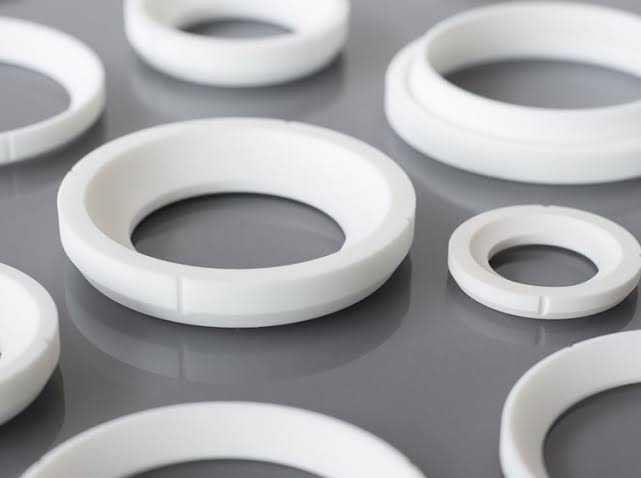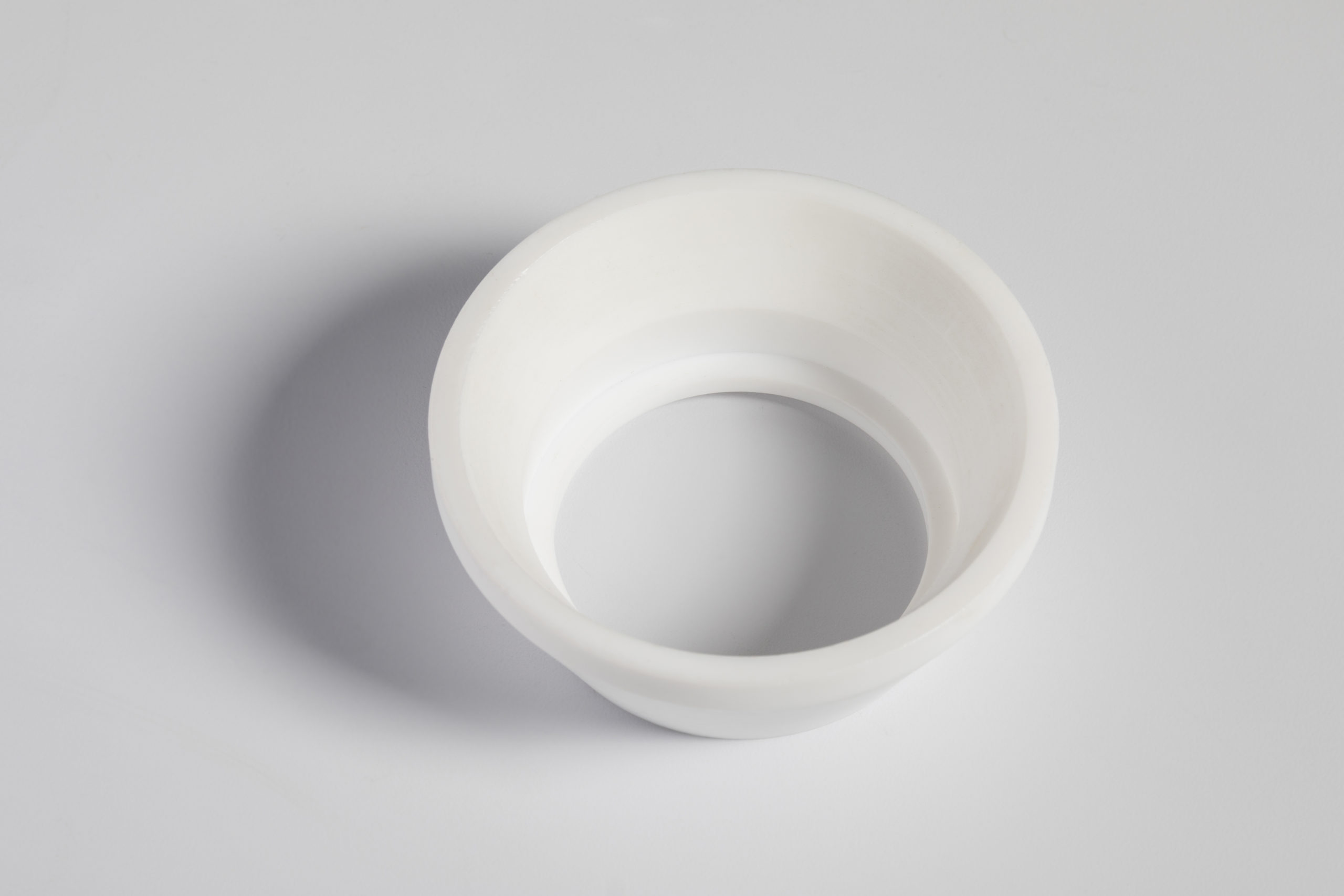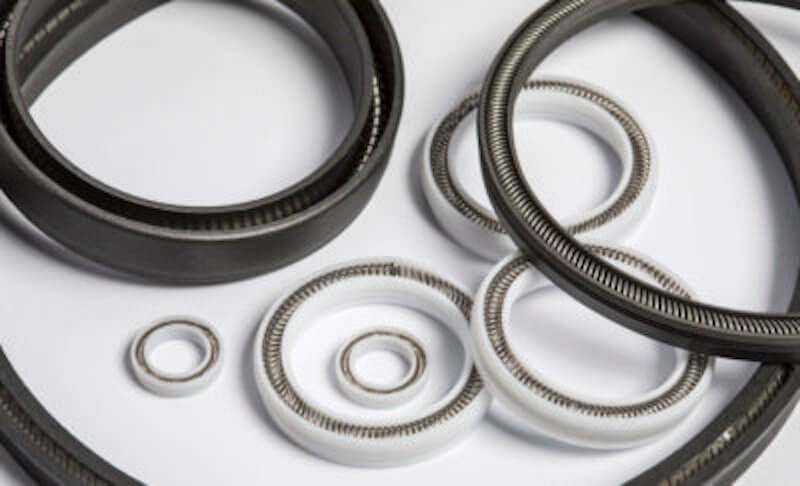The polymers most commonly used in spring-energized seals are PTFE, PEEK, UHMW PE, Vitron, and Hytrel. All of these are high-performance engineering polymers, but some are better adapted for certain applications than others. In this week’s blog post, we will discuss the best materials for spring energized seals, and how they can be applied for each industry.
Spring-Energized Seals with Polymer Jackets
Polymer sealing jackets are often chosen over their rubber counterparts for various reasons, including better performance at extreme temperatures, a wider range of chemical compatibility, and lower friction. And, depending on the material under consideration, polymers often provide better specific strength and stiffness. Because of these and other properties, they are often used as the sealing jacket for spring-energized seals.
However, knowing which polymer is best adapted for a specific application can be challenging, especially since there are a wide range of engineered polymers that offer excellent mechanical and chemical properties. What follows is a discussion of the most popular spring-energized seal materials for five industries.
Food and Dairy
Food and dairy applications can make the design of spring-energized seals more challenging, especially when it comes to the choice of the seal jacket material. Materials must be compliant with FDA CFR 177, contained in Title 21 of the Code of Federal Regulations. And other standards may also apply, such as NSF/ANSI standard 61 for drinking water systems, 3A Dairy sanitary standards 18-03 and 20-27, and (EU) 1935/2004.
Because of such regulations, the two most commonly used jacket materials for spring-energized seals in the food and dairy industry are PTFE (both virgin and certain grades of mineral-filled) and UHMW PE (Ultra High Molecular Weight Polyethylene). Besides their FDA approval, these materials also provide low friction, compatibility with most cleaning and sanitation routines, and a good range of operating temperatures. In addition, both materials are self-lubricating, which eliminates the problem of finding a lubricant that is safe to use.
Aerospace and Defense
Aerospace and defense applications that require a spring-energized seal often turn to materials such as PEEK (Polyether ether ketone) and PTFE. Spring-energized seals are used with hydraulic systems, fuel systems, actuators, and gimbal pods in everything from massive airliners and space rockets to lightweight, nimble drones. Operating environments may involve extreme temperatures, exposure to aggressive chemicals, and mission-critical performance. Some operating conditions may also involve cryogenic temperatures, for which PTFE and Hytrel work extremely well. Note that Hytrel is a TPC-ET thermoplastic polyester elastomer.
In space applications, temperatures can range from cryogenic vacuum conditions to extremely high temperatures and pressures. For spring-energized seals used in rockets, PTFE is the most common due to its wide operating temperature range, outstanding chemical compatibility, and extremely low friction. In addition, PTFE lends itself to the weight constraints and pressure fluctuations involved with space travel, and has been proven over and over that it can provide mission critical levels of reliability.
Automotive
Automotive seals must withstand rugged, extreme environments that may involve everything from corrosive chemicals to extremely high temperatures. When selecting a seal material for automotive applications, properties such as low friction, wear resistance, resistance to abrasion, and durability are major concerns.
For automotive applications, the most common choice of seal jacket material for spring energized seals include PTFE and Viton (fluoropolymer elastomer). To provide the best performance in the demanding environment of automotive seals, additives such as MoS2 (Molybdenum Disulfide) or carbon may be added to increase strength, wear resistance, and stiffness or achieve low friction.
Renewable Energy
One of the most common areas in renewable energy that requires the use of spring-energized seals is wind energy. Seals for wind turbines can be extremely challenging to design because of the wide range operating temperatures involved, problems with lubricants that can freeze in cold temperatures, extremely low friction so that energy is not wasted, and reliable performance over a long life. Seals must also exhibit low moisture absorption.
Wind turbine seals typically use PTFE and UHMW PE, known for their low friction and self-lubricating properties. They also offer extremely low moisture absorption, a good range of operating temperatures, and good wear resistance. In addition, they have good resistance to degradation under constant UV exposure.
Oil and Gas
In the context of the oil and gas industry, LNG plants figure heavily in applications that require the use of cryogenic spring-energized seals. For such cryogenic applications, PTFE and UHMW PE have been found extremely effective. For non-cryogenic environments, Hytrel (thermoplastic polyester elastomer) is another commonly used material along with PTFE. These materials offer good performance in sub-freezing temperatures and are reliable enough to support the spring-energized seal design as it prevents leaks that could be devastating not just to humans but to the environment as well.
For other applications, issues of extremely high temperatures and pressures are involved, such as sealing solutions for wellheads. For those jobs, PEEK is often the preferred material. It possesses low friction, excellent chemical compatibility, a wide operating temperature range, and high strength. In addition, it is also one of the few polymers that can maintain its performance in sour gas environments.
Conclusion
Spring-energized seals can provide gas-tight, highly reliable sealing solutions for some of the most difficult operating environments imaginable when combined with the right material. For many sealing solutions out there, high performance polymers are a perfect complement to the ruggedness of a spring-energized seal in many different industries. If you need a spring-energized seal, regardless of industry, we can help you select the right material to provide a durable, effective seal. Contact Advanced EMC today!










